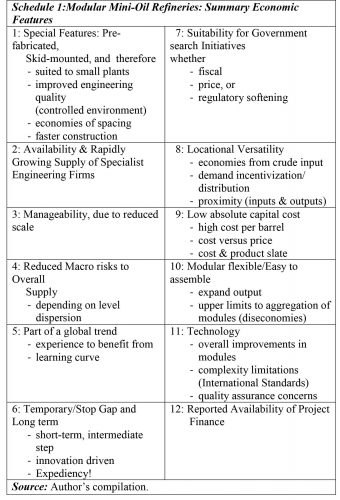Introduction
For the purposes of today’s column, I shall be revisiting my much earlier evaluation of development analysis and policy, along with my assessment of concrete proposals and studies by the Authorities aimed at evaluating the need for constructing a state-run or joint venture, JV, oil refinery that is designed to contribute value added to Guyana’s crude oil exportation. As will be indicated these efforts were rather extensive, lasting in essence over a score of consecutive columns; from May 28 2017 to October 22 2017.
Back then on September 17 2017 I had walked readers through the then advertised 100,000 barrels per day, Guyana Oil Refinery Study, prepared by Pedro Haas of Hartree Partners, Consultant to the Ministry of Natural Resources, MoNR and concluded as follows:
“At this point I can state Decision Rule 2. Based on the Haas study, and given a worst-case scenario, where this feasibility study (sponsored by the MoNR, would be rated at least 4 on a scale of 1-10 (with 10 being the best) when made available, it would be economically unjustifiable for the Guyana state to opt for putting resource gains from its oil and gas wealth into a state owned, controlled, and operated oil refinery. As I shall further argue this decision rule holds in the context of 1) the economics of oil refining, as captured in previous columns 2) the most nationalist and sympathetic interpretation of local content policy, and 3) absence of proof that the author/sponsor of the study concocted the results, in order to deny the country its birthright as some readers have urged on me!
As matters presently stand I had in the face of extensive coverage used varied techniques to facilitate readers’ attention. One of these was my resort to periodic summary schedules. As an example, Schedule 1] below captures my extensive evaluation of the pros and cons of Modular Mini-Oil Refineries. Entitled, Summary Economic Features. The Schedule contains the 12 economic features of mini-oil refineries that I introduced in my columns.
The 12 features captured in the Schedule are: 1) their pre-fabricated, skid-mounted construction 2) their “broad availability” in various sizes 3) their manageability combined with the advantage of small scale 4) their low risk of “episodes of total” refinery failure 5) widespread experience globally, with such refineries 6) their short-term, stop-gap capability 7) their relatively low absolute dependence on state support 8) their locational versatility 9) their low investment/capital construction cost 10) their flexibility 11) the growing evidence of increasing innovation in these refineries, and finally, 12) their suitability for project financing.
Access
For convenience, I remind readers that weekly copies of my previous columns in this series can be accessed online at two main websites; namely 1] Stabroek News [ Clive Thomas, Guyana and the Wider World] and 2] Yahoo News search engine. Further several social media sites and collections offer qualified access.
Decision Rule 1
For the sake of the completeness of decision guidance, I cite Decision Rule 1. The aim of this rule is to circumscribe the building of a local oil refinery venture to decisions based entirely on commercial feasibility terms. Here, private investors are expected to take their investment decisions, based on private costs versus private benefits calculations, and their assessment of the “risk-reward” criterion in a similar context. It follows then that, if the investors take all the risks, they are therefore, fully entitled to the rewards, where these are forthcoming.
Related to this decision rule, I am positing that, any effort on the part of the Government/state at the present development conjuncture, to commit scarce resources towards establishing a local oil refinery (whether on its own or otherwise jointly), would be ill-advised. This holds, even if it is asserted that this is being done in order to advance upstream value-added to its downstream discovery of crude oil. The reason for taking this strong position will become clearer as the analysis proceeds. I wish to emphasize this observation up front, as further comment will focus on whether a state-owned oil refinery would generate positive returns or not. The deeper economic issue that faces the country, in my opinion, is the need to compare returns from a state-owned oil refinery (whether positive or negative) with other available alternative investments at that scale! This is the economically efficient decision rule for the country to follow.
In other words, as I have repeatedly stressed in these Sunday columns, Guyana’s decision rule is to find always, the best possible alternative use for its scarce investable resources.
Conclusion
The combination of Decision Rules 1 and 2 cover outcomes related to the building of an oil refinery by 1] State alone or through a JV 2] Private investors local or as a JV through foreign private investors.







